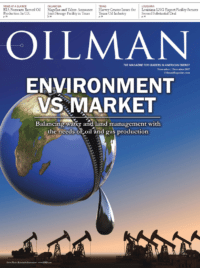As I arrived in Washington, D.C. on September 27th, I knew what the subject for my next column should be: “federal tax reform and the U.S. energy industry.” That same day the Republicans unveiled their blueprint for tax reform. The dialogue had begun.
The first question on my mind: How is tax reform going to impact my home state of Oklahoma and the U.S. energy industry overall? It was evident that during my recent visit to Washington DC, and even as I write this column, that the Trump Administration and Congressional Republicans are laser-focused on implementing tax reform.
The last time there was major comprehensive tax reform in the U.S. was in 1986 during the Reagan administration. I testified during that time before the U.S. Senate Energy and Natural Resources Committee about the implications of tax reform to the oil and gas industry.
There is no question that pro-growth tax reform is needed. Developing a more competitive and fair tax system will support more investments and more jobs. The U.S. has one of the highest corporate tax rates in the world. The Administration has called for “American energy dominance.” With the right kind of tax structure in place, America can reach that goal. Under the proposed plan the corporate tax rate will drop to 20% from 35%, as one example of reform.
In the U.S., corporate taxpayers have the ability to recover costs and be taxed only on net income. These provisions, tax expenditures, are not subsidies. Cost recovery such as the depletion allowance and intangible drilling costs are not subsidies but incentives to sustain a strong energy industry which supports sustained oil and natural gas exploration and production activity.
According to a recent Wall Street Journal editorial, “Overall, the GOP has produced a tax-reform outline that can revitalize a weak economic expansion, lead to more new business creation, enhance worker productivity, and lift wages.” Economic expansion, new business creation, work productivity and increased wages are what the energy industry needs now!
By turning to new technologies, innovation, and the enduring American spirit that has enabled us to overcome challenges this nation has faced, the goal of a job-growth tax plan is essential in the U.S. energy industry. It is time for us to evaluate our energy future. “Future generations are depending on us to keep the American dream alive!”
In a recent op-ed in Investor’s Business Daily, Barry Russell, Independent Petroleum Association of America CEO and President, sums it up: “As Washington, D.C. looks to tackle reforming the tax code, the critical role of American energy production cannot be overlooked. Tax reform…needs to move in the direction of strengthening businesses of many shapes and sizes, putting our economy on a track for success, and creating new jobs and opportunities along the way for our workforce.”
What do you think? It is time for National Energy Talk. www.nationalenergytalk.com
Mark A. Stansberry, energy advisor and corporate development strategist, has been a columnist and contributor for Energies Media since 2014. He is the author of America Needs America’s Energy: Creating Together the People’s Energy Plan and the host of the National Energy Talk podcast. Stansberry served as U.S. Senator Bartlett’s intern/staff member from 1975-76, and led Senators Bellmon and Bartlett’s State Youth Conference in 1976. Stansberry can be contacted through his website.









